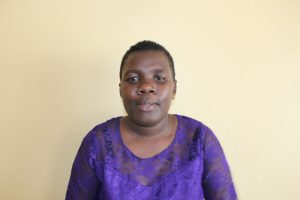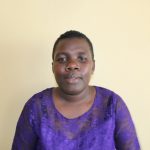Jebrongo Primary School was established in 1975 with the support of the Catholic Church. Since then, it has grown alongside the community population, yet the school still does not have a reliable water source to meet the daily water needs of its 395 students and 14 staff.
There is a small 3,000-liter rain tank on the school campus, but it can't provide sufficient water for drinking, never mind what is needed for all of the school's other needs like cooking, cleaning, special school programs, and the construction of new classrooms. Without adequate water, the school's progress is stunted.

"Our school has fewer class[rooms], and as seen, construction of new class[rooms] is ongoing, and we need a lot of water. So, it's a big challenge. We end up spending a lot of money buying water to use. If we had water at [the] school ground, we would have saved the money for other activities that will help students. Also, [the] lack of water at school interferes with lessons whenever students are tasked to fetch water," said 38-year-old teacher Innocent Ouko Saya (shown below).

When the tank runs dry, which it often does, students must leave the school grounds to find more water. Every morning after arriving at school and then again during break times, students go to collect water from the local stream.

But the trips to the stream require a lot of effort from students. They grab their water collection containers and head down a rocky dirt road. Once there, they kneel down and submerge their jugs into the flow of murky water to let their containers fill. Then students carry their heavy water jugs back to school, knowing they will have to do it again in a few hours.

The trip is not only tiring, but it also saps the time and energy students should use for learning instead.
Students miss even more time when they become sick with water-related illnesses like diarrhea and typhoid from drinking the contaminated water they worked so hard to collect. During the dry season, illnesses are more prevalent because students collect water wherever they can find it, not just from the stream.

"I was once diagnosed with typhoid after drinking water from downstream. This was terrible and painful because I had to miss school for a week. When I came back, other students [had] learned ahead, which affected my performance negatively," said 10-year-old student Magdalene K., shown above collecting water.
“Universal access to safe drinking water is a fundamental need and human right. Securing access for all would go a long way in reducing illness and death, especially among children.” - UNICEF
With a well of their own right on the school campus, hopefully, students will be able to spend more time in class learning and make strides towards a stronger future.
"The school is ready and willing to support the project to successful completion. They are also grateful the project will be of great help to them," said our field officer, Stella Inganji.
Water at schools is unique, which is why we need unique solutions.
The Proposed Solution, Determined Together...
At The Water Project, everyone has a part in conversations and solutions. We operate in transparency, believing it benefits everyone. We expect reliability from one another as well as our water solutions. Everyone involved makes this possible through hard work and dedication.
In a joint discovery process, community members determine their most advantageous water solution alongside our technical experts. Read more specifics about this solution on the What We're Building tab of this project page. Then, community members lend their support by collecting needed construction materials (sometimes for months ahead of time!), providing labor alongside our artisans, sheltering and feeding the builders, and supplying additional resources.
Water Access for Everyone
This water project is one piece in a large puzzle. In Kenya, Sierra Leone, and Uganda, we're working toward complete coverage of reliable, maintained water sources that guarantee public access now and in the future within a 30-minute round trip for each community, household, school, and health center. One day, we hope to report that this has been achieved!
Training on Health, Hygiene & More
With the community's input, we've identified topics where training will increase positive health outcomes at personal, household, and community levels. We'll coordinate with them to find the best training date. Some examples of what we train communities on are:
- Improved hygiene, health, and sanitation habits
- Safe water handling, storage & treatment
- Disease prevention and proper handwashing
- Income-generation
- Community leadership, governance, & election of a water committee
- Operation and maintenance of the water point
Handwashing Stations
Alongside each water source, we also provide two new gravity-fed handwashing stations that will allow everyone at the school to wash their hands without running water. Handwashing is so important to help prevent future water-related illnesses in the school community.
The student health club will maintain the stations, fill them with water, and supply them with soap (which we will teach the school community how to make during the training!).
VIP Latrines
In addition, we will construct two triple-door Ventilated Improved Pit (VIP) latrine blocks designed to prevent fecal disease transmission. Each latrine will have a cement floor, which is easy to use and clean regularly. Three doors will serve the girls, and three doors will serve the boys.





 Borehole Well and Hand Pump
Borehole Well and Hand Pump
 Rehabilitation Project
Rehabilitation Project


































